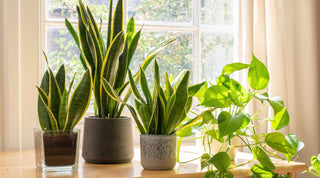Green beans are a popular and rewarding crop for gardeners of all levels.
Whether you have a small backyard garden or a larger plot, growing green beans is a great way to enjoy fresh, delicious vegetables throughout the summer. In this guide, we'll cover everything you need to know about growing green beans, from planting to harvesting, ensuring a successful and productive season.
Why Grow Green Beans?
Growing green beans is not only easy, but it also offers several benefits. Green beans are rich in vitamins, minerals, and dietary fiber, making them a nutritious addition to your meals. Additionally, green beans are prolific producers, providing a steady supply of fresh beans throughout the growing season. Their ability to fix nitrogen in the soil also makes them excellent companions for other plants in your garden.
👉 Seeds we like: Organic Bush Tendergreens
Types of Green Beans
Before you start growing green beans, it's important to choose the right type for your garden. There are two main types of green beans: bush beans and pole beans.
-
Bush Beans: Bush beans are compact plants that grow to about 1-2 feet tall. They are ideal for small gardens or container gardening. Bush beans typically mature faster and produce all their beans in a short period, making them perfect for quick harvests.
- Pole Beans: Pole beans are climbing plants that need support, such as a trellis, to grow. They produce beans over a longer period and can reach heights of 6-10 feet. Pole beans are ideal if you want a continuous harvest throughout the growing season.
Planting Green Beans
Growing green beans starts with proper planting. Here’s how to get started:
-
Choosing the Right Location: Green beans thrive in full sun, so choose a spot in your garden that receives at least 6-8 hours of sunlight each day. Ensure the soil is well-drained and fertile, with a pH between 6.0 and 6.8.
-
Soil Preparation: Prepare the soil by adding organic matter, such as compost or well-rotted manure, to improve fertility and drainage. Green beans do not require a lot of nitrogen, so avoid high-nitrogen fertilizers.
-
Sowing the Seeds: Direct sow green bean seeds in the garden after the last frost date when the soil has warmed to at least 60°F (15°C). Plant the seeds 1 inch deep and 2-4 inches apart for bush beans, and 4-6 inches apart for pole beans. Space rows about 18-24 inches apart.
- Watering: Water the seeds immediately after planting and keep the soil consistently moist until germination, which typically occurs in 7-10 days. Once established, green beans need about 1 inch of water per week.
Caring for Green Beans
Proper care is essential for growing green beans successfully. Here are some tips to keep your plants healthy and productive:
-
Mulching: Apply mulch around the base of the plants to retain moisture, suppress weeds, and regulate soil temperature. Mulch also helps prevent soil-borne diseases by keeping the foliage dry.
-
Supporting Pole Beans: If you're growing pole beans, provide a trellis, stake, or other support structure for the vines to climb. Train the vines to grow up the support to ensure good air circulation and ease of harvesting.
-
Fertilizing: Green beans typically do not require additional fertilization if the soil is well-prepared. However, if your plants show signs of nutrient deficiency (such as yellowing leaves), apply a balanced fertilizer or side-dress with compost.
- Pest and Disease Control: Keep an eye out for common pests like aphids, bean beetles, and spider mites. Use organic pest control methods, such as neem oil or insecticidal soap, to manage infestations. Avoid overhead watering to reduce the risk of fungal diseases.
Harvesting Green Beans
The final stage of growing green beans is the harvest. Here’s how to know when your beans are ready:
-
When to Harvest: Green beans are typically ready to harvest 50-70 days after planting, depending on the variety. Harvest the beans when they are young, tender, and about 4-6 inches long. The beans should be firm, with seeds that are not fully developed.
-
How to Harvest: Gently snap or cut the beans from the plant, taking care not to damage the vines. Harvesting regularly encourages the plant to produce more beans, ensuring a continuous supply.
- Post-Harvest Care: After harvesting, store green beans in the refrigerator in a plastic bag or container. They can be stored for up to a week, or you can blanch and freeze them for longer storage.
👉 Seeds we like: Organic Bush Tendergreens
Conclusion
Growing green beans is a rewarding experience that offers fresh, nutritious produce for your table. By following these tips on planting, caring for, and harvesting green beans, you can enjoy a bountiful harvest throughout the growing season. Whether you choose bush beans for quick yields or pole beans for a continuous supply, growing green beans is a great addition to any garden. Happy gardening!



